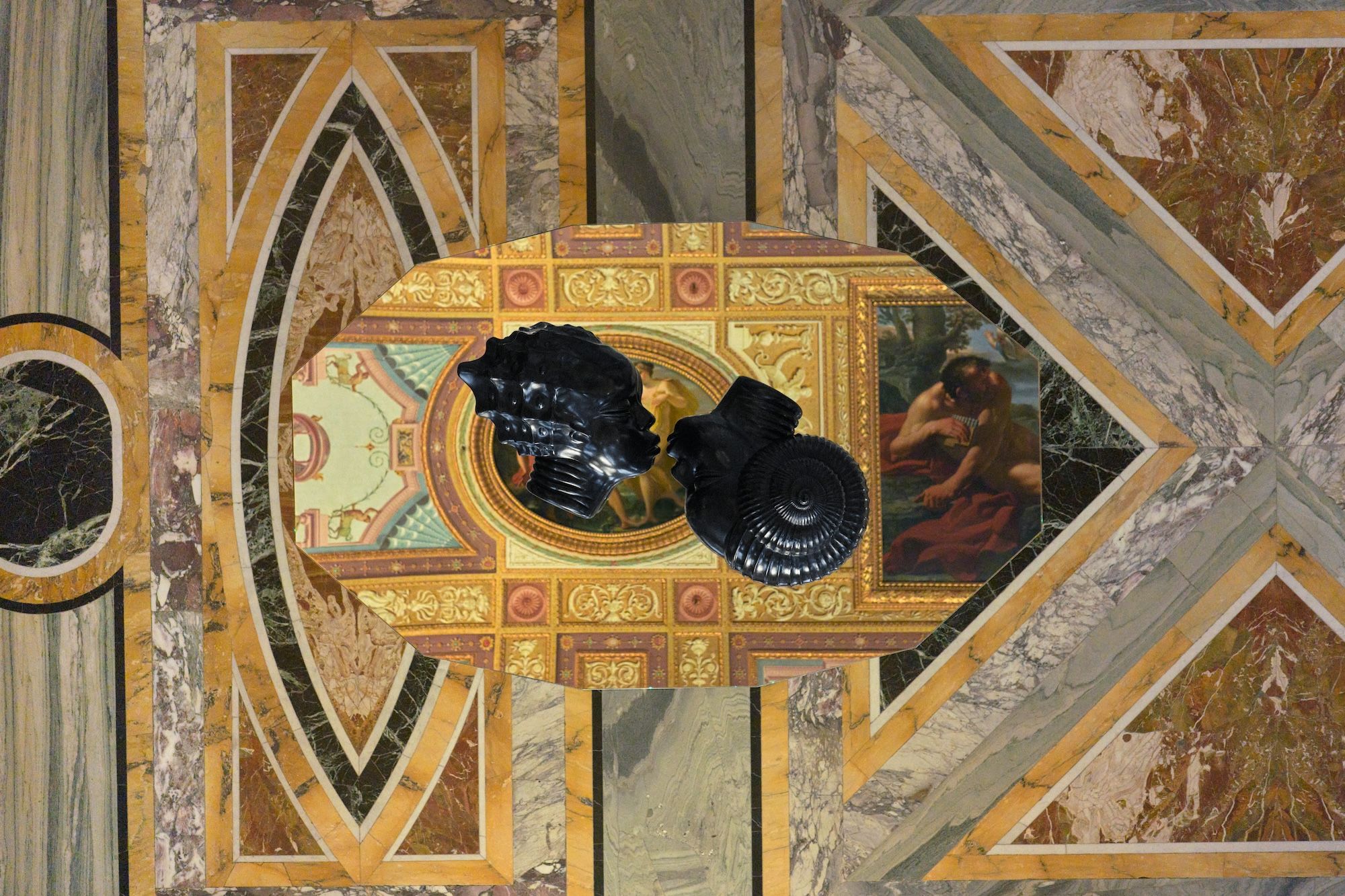By The Arts Editorial Team
FENDI deepens its cultural legacy with its patronage of Wangechi Mutu: Black Soil Poems, a groundbreaking exhibition on view at the Galleria Borghese in Rome through September 14. Curated by Cloé Perrone, the show marks a historic first: Wangechi Mutu, the visionary Kenyan-American artist known for her otherworldly hybridity, becomes the first living female artist to mount a solo exhibition within the palatial halls once occupied by Cardinal Scipione Borghese. Black Soil Poems is not a conventional installation; it is ritual, reclamation, and a quiet upheaval of classical order. Mutu’s work, spanning bronze sculptures, soil-based installations, video, sound, and mythic iconography, recasts the Borghese’s baroque splendor as a site of transformation. Her vision threads together ancestral memory, ecological metaphor, and radical femininity into a visual and spatial language that redefines traditional museum boundaries.
A Radical Reimagining of Space
Within the gilded interiors of the Galleria, Mutu’s suspended works like Ndege, Suspended Playtime, and the haunting Weeping Heads float mid-air, gently disturbing the gravitational pull of marble, stucco, and centuries of canonical dominance. These forms do not clash with the Borghese’s permanent collection, rather they converse with it — softly yet deliberately. Their very suspension is a refusal: to be fixed or easily classified. Outside, in the lush expanse of the Secret Gardens and across the museum’s façade, monumental sculptures, including The Seated I and IV (originally conceived for The Met’s Façade Commission), Water Woman, Nyoka, and Musa, stand as mythological sentinels. These figures are part woman, part vessel, part spirit. They exude power, serenity, and watchfulness, resisting linear narratives and colonial frames as Mutu transforms the garden into a profound ceremonial ground.
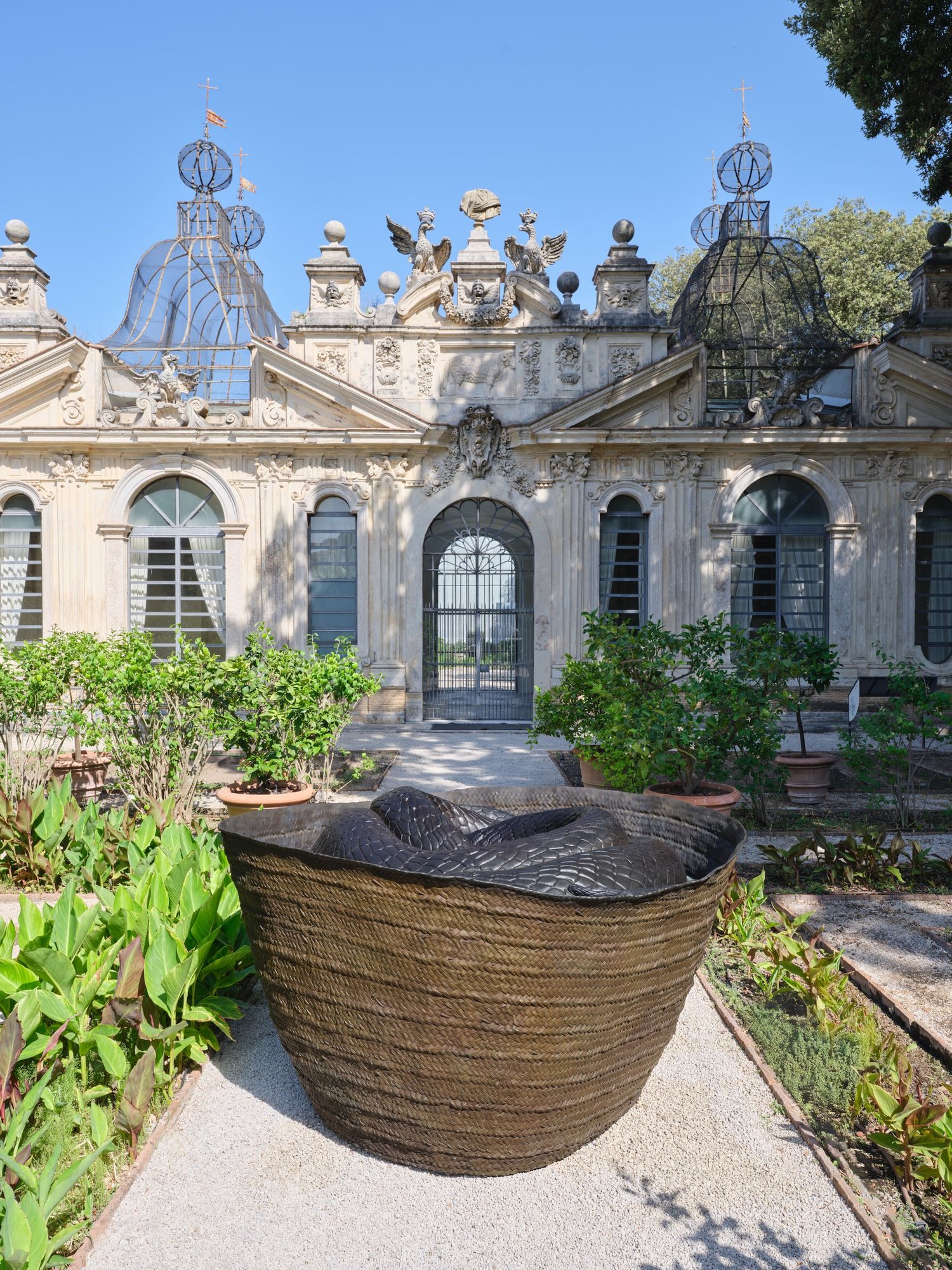
Sound, Language, and Ancestral Echoes
Throughout the exhibition, sound and language take focus. In Poems by My Great Grandmother I and Grains of War, Mutu introduces whispered histories and poetic resistance. The latter draws directly from Bob Marley’s 'War' which draws from Haile Selassie’s historic 1963 anti-colonial speech to the United Nations. Here, language extends beyond text as the walls hold memory, protest, and mourning. At the American Academy in Rome, an extension of the exhibition, Shavasana I, a solitary bronze figure lying beneath a woven mat, rests among ancient funerary inscriptions. The work bridges Roman ritual with contemporary meditation on mortality, surrender, and ancestral continuity. It’s a gesture of quiet defiance: laying one’s body down not in defeat, but in sacred recognition.
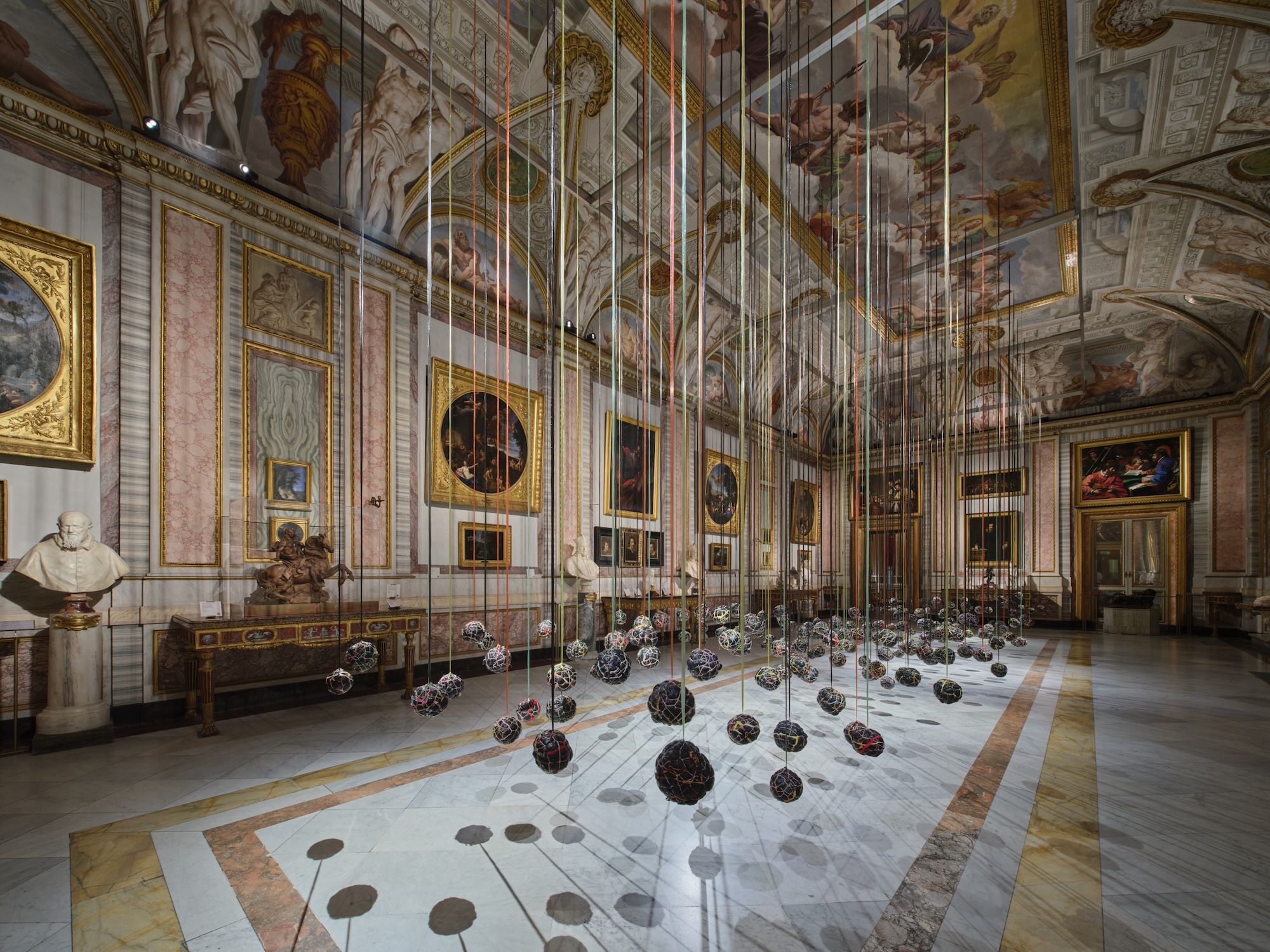
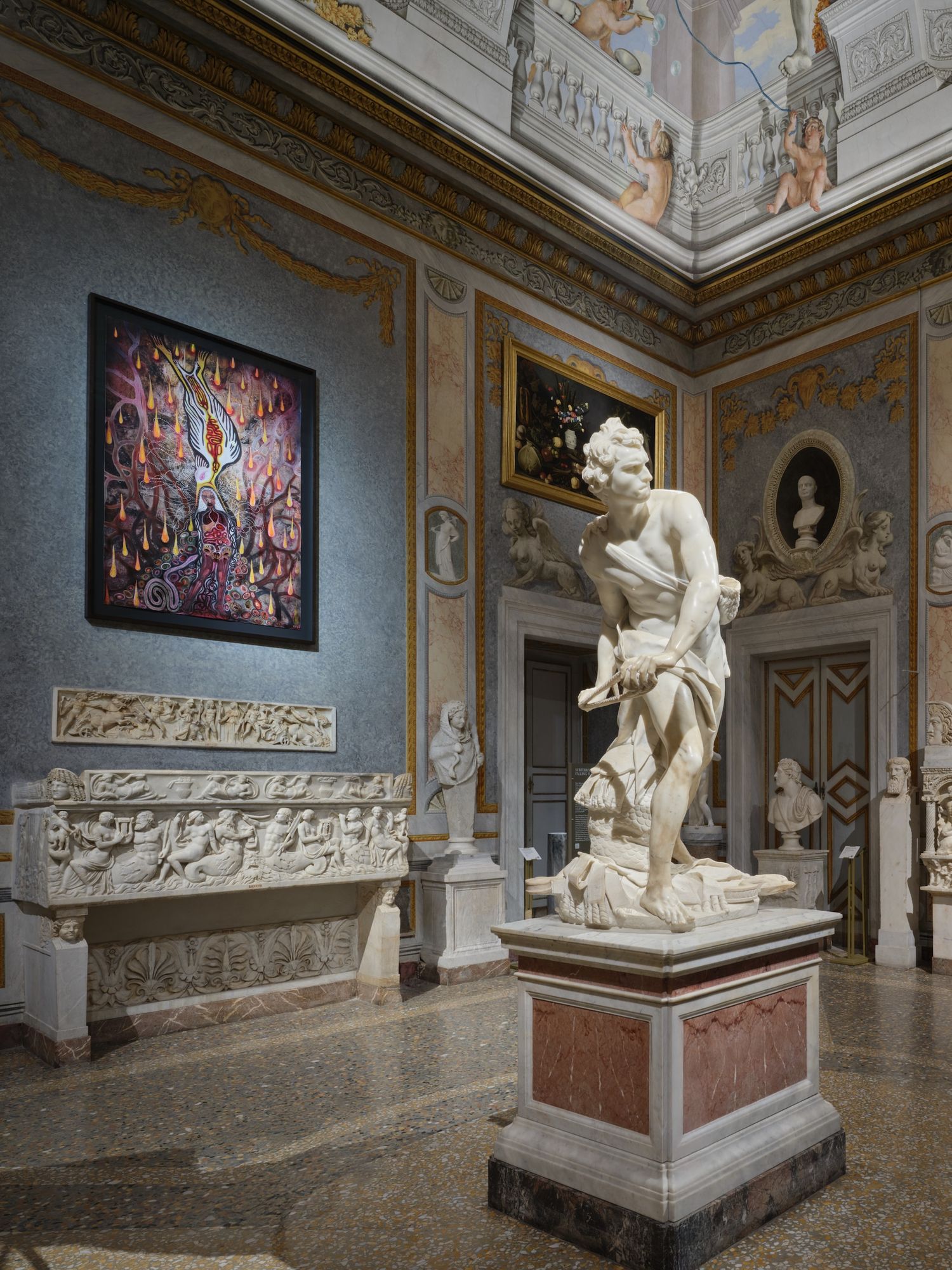
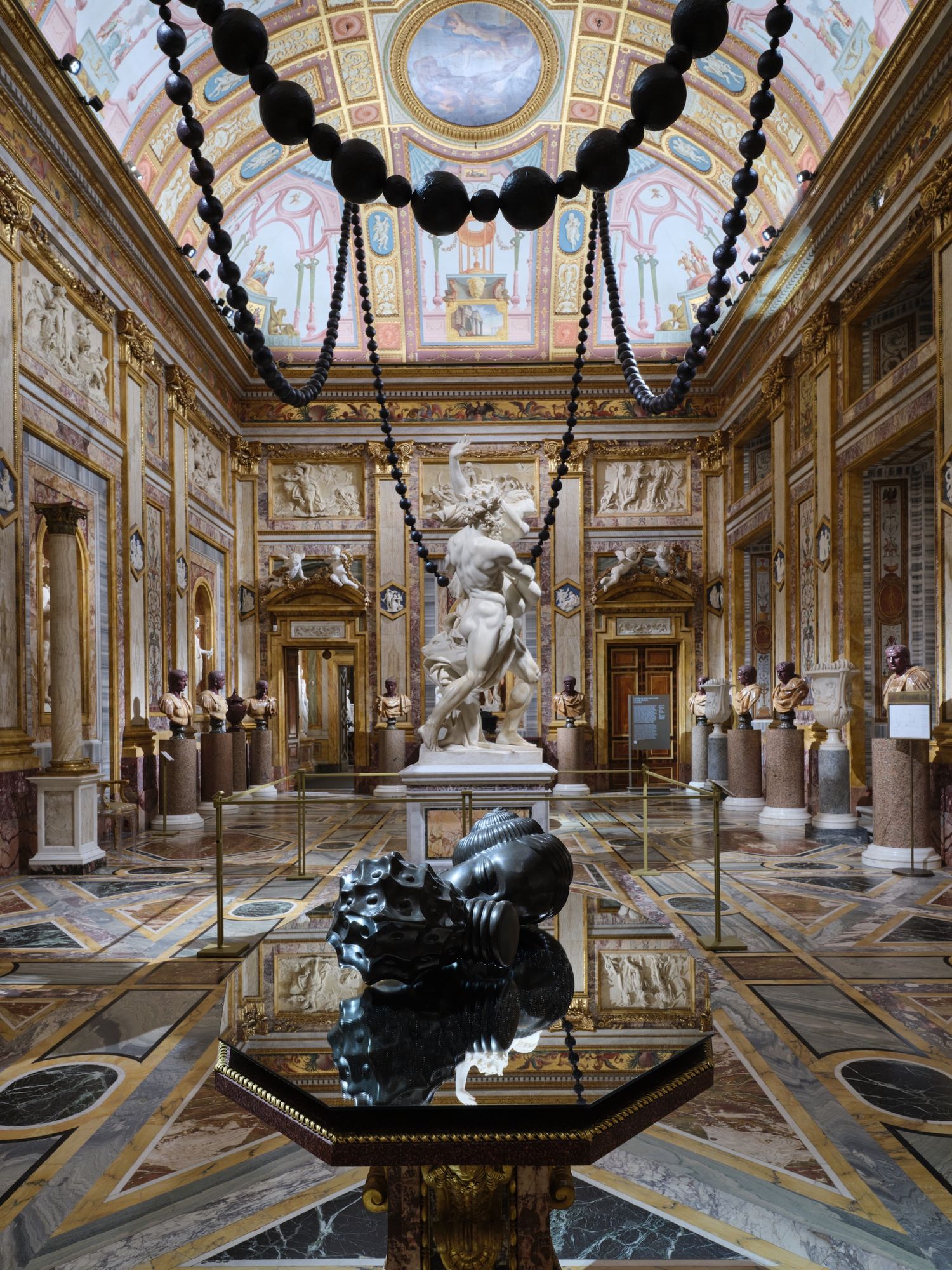
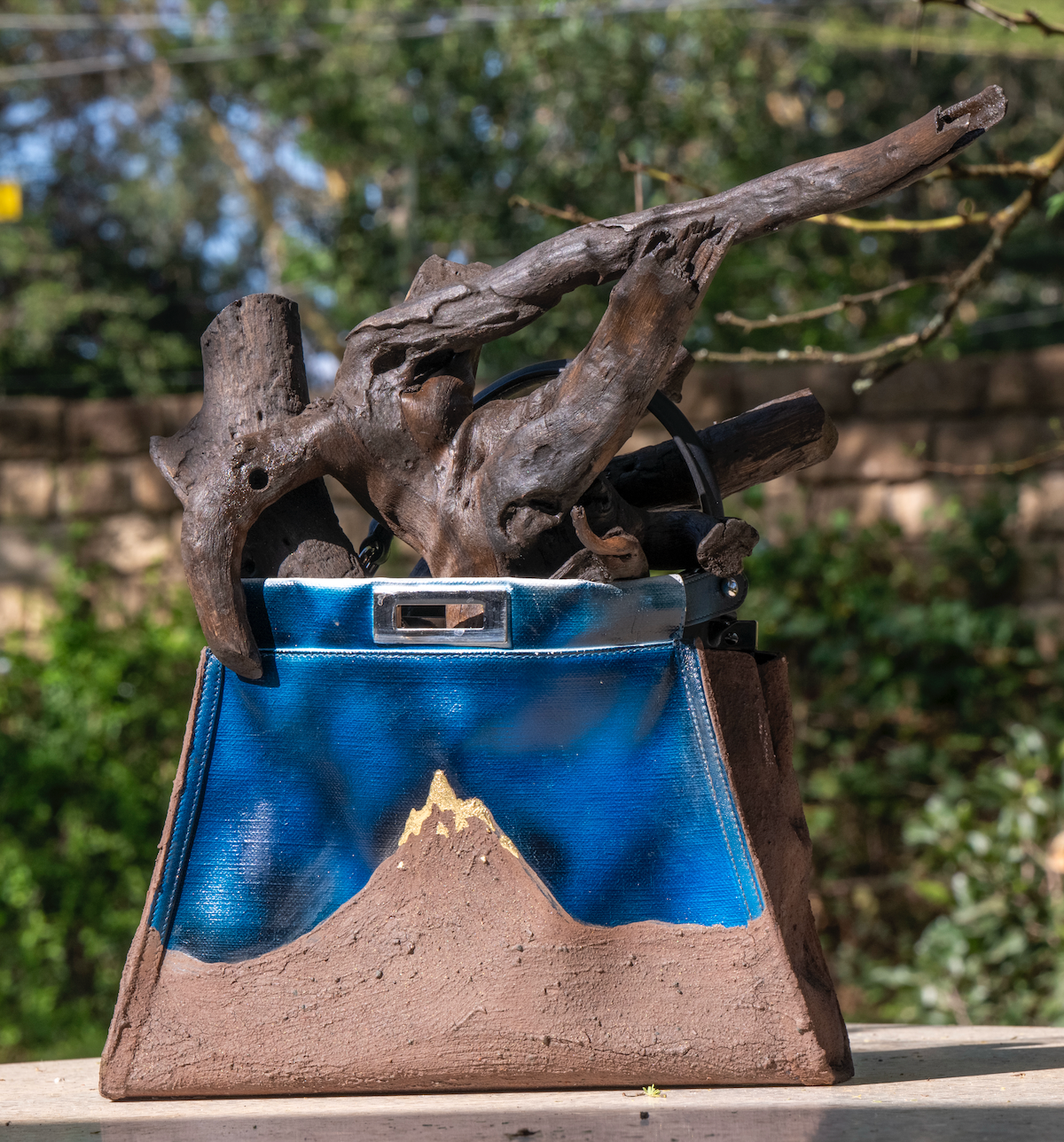
Fashion as Cultural Artifact: The Wangechi Mutu x FENDI Peekaboo
To mark this profound collaboration, FENDI unveils the Wangechi Mutu x FENDI Peekaboo bag, a sculptural reinterpretation of the House’s iconic handbag. Hand-painted with landscapes from Kenya’s Ngong Hills and Mount Kenya, the bag blooms from within: branches rise, rendered in wood and finished in delicate gold leaf. It is less an accessory than a living relic of memory, soil, and self. Originally conceived by Silvia Venturini Fendi in 2008, the Peekaboo has become a canvas for radical expression, previously reimagined by luminaries such as Zaha Hadid, Sabine Marcelis, Adele, and Giuseppe Penone. In Mutu’s hands, the fashionable accessory becomes a vessel of poetic meditation on femininity, land, and resistance.
Wangechi Mutu: Black Soil Poems
Galleria Borghese, Rome | June 10 – September 14, 2025
Additional works on view at the American Academy in Rome
